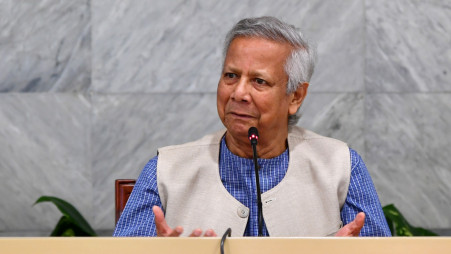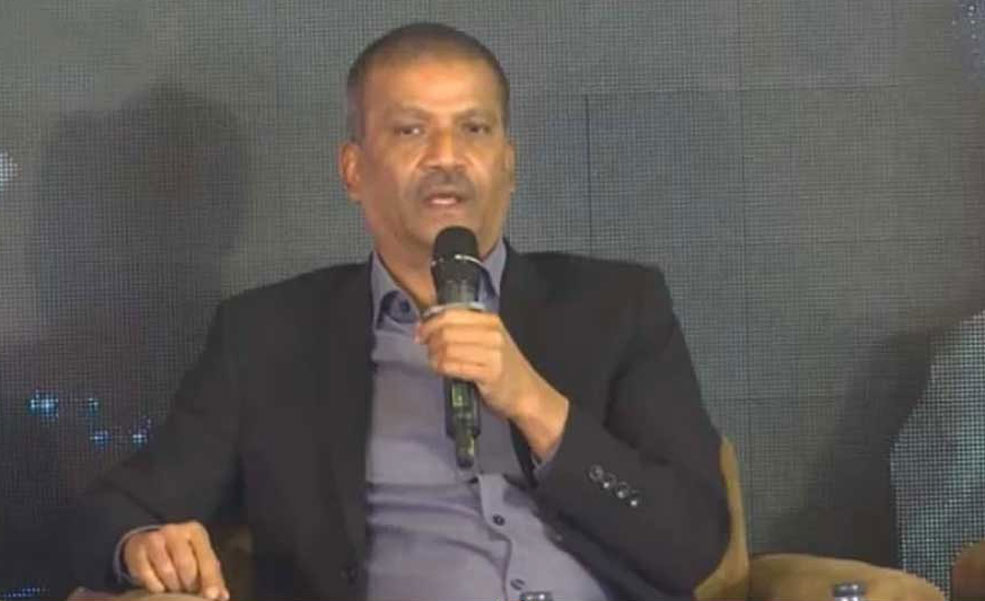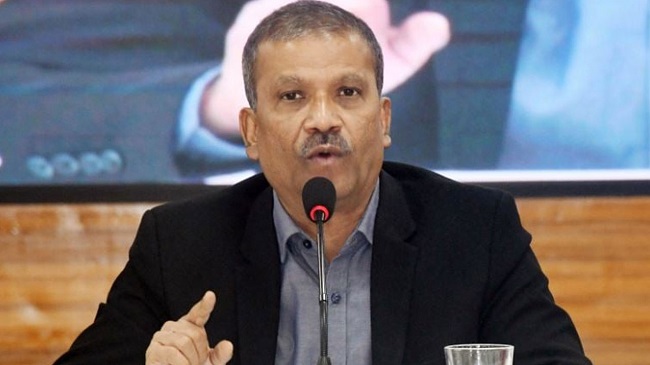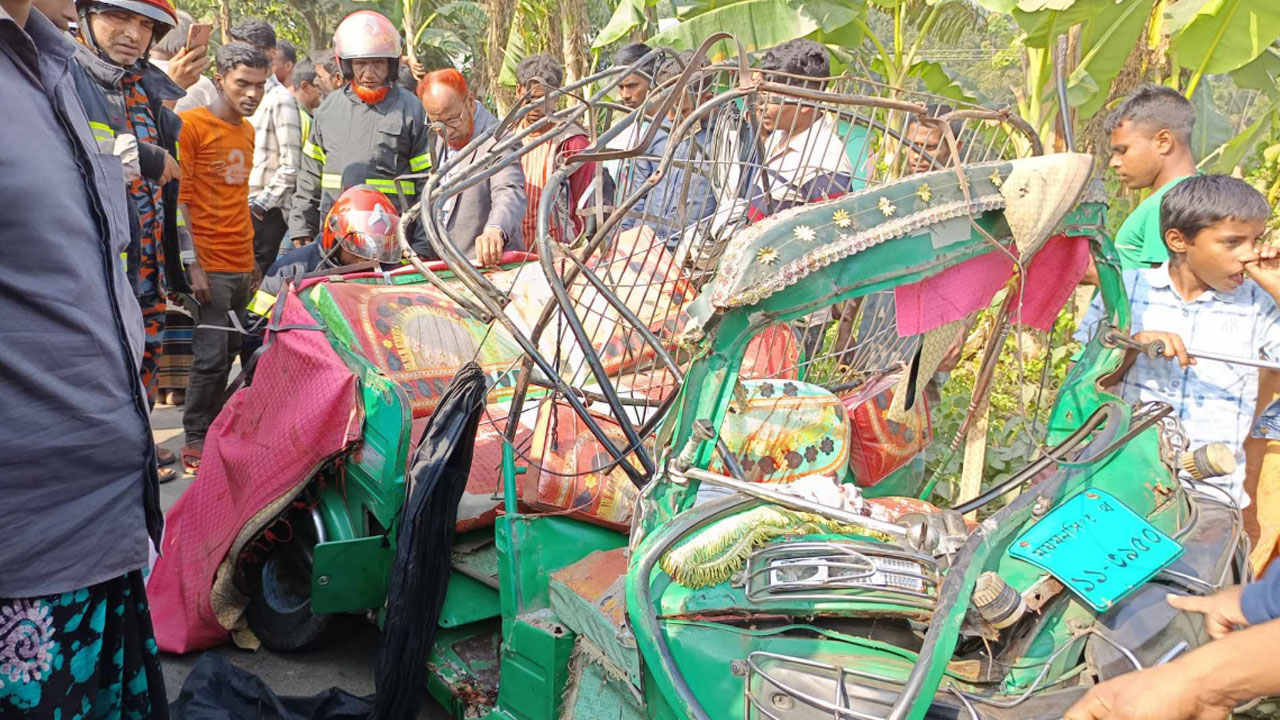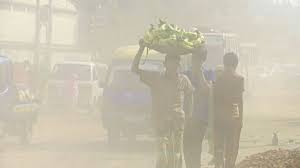The cries of four million flood-affected people in Sylhet and Sunamganj for food, safe drinking water, and shelter have intensified as the country’s northeastern region experiences one of the worst floods in recent memory.
Sunamganj has been hit the hardest, with waist-deep floodwaters lingering almost everywhere and no dry land in sight.
Children and the elderly are said to be particularly vulnerable because communications are still down, power is out, and medical services are disrupted in most areas.
However, rail communication has been restored from Dhaka to Sylhet.
The situation could get worse before it gets better, with moderate to heavy rain expected to continue until Tuesday or Wednesday, when the flood could spread further inland.
On Sunday, the Chief of Army Staff of Bangladesh, General SM Shafiuddin Ahmed, visited and inspected the flood-affected areas of Sylhet.
The Bangladesh Army is going all out to help the flood-affected people of Sylhet, the chief said.
“The army would stand beside the country’s flood-hit people even after the flood waters had receded,” General Shafiuddin added.
Meanwhile, Prime Minister Sheikh Hasina is also expected to visit the flood-stricken Sylhet region tomorrow (Tuesday).
Food, water shortage at shelter centres
Flood victims in Sylhet are going through immense suffering due to a shortage of food and pure drinking water at shelter centres.
“We have neither any food nor have we received any relief at the shelter centre,” said Terab Bibi, a resident of Chararpar in Sylhet city who has taken shelter at Ramkrishna Primary School in the Chalibandar area amid the worsening flood situation.
“I failed to provide any food to my children as no relief materials have reached the shelter yet. I gave some puffed rice to my children. How can I stay here?” said the 35-year-old woman.
Floods hit 70 upazilas in 12 districts, 2 killed
According to the Disaster Management and Relief Ministry, at least 70 upazilas, including six new upazilas in 12 districts, were submerged by the floodwaters while two deaths were reported till Sunday.
The other flood-affected districts are Rangpur, Kurigram, Gaibandha, Nilphamari, Netrokona, Kishoreganj, Sherpur, Jamalpur, Moulvibazar, and Habiganj.
The flood situation has improved a bit in Sylhet but it remains unchanged in Sunamganj, while the flood situations in Habiganj and Moulvibazar have deteriorated.
Officials of the Meteorological Department and the Flood Forecasting and Warning Center said the rainfall may decrease after Monday and, in that case, water will begin to recede from Tuesday.
The flood situation in north-eastern areas may improve, but it will worsen in the adjacent northern parts of the country due to the rise in water levels of the Brahmmaputra and Teesta.
“The water level in flood-hit areas of the country will start receding from Tuesday,” said State Minister for Disaster Management and Relief Dr Enamur Rahman while briefing journalists at his Secretariat office in Dhaka.
He said the flood situation in Sylhet has improved a bit, but the situation in Habiganj and Moulvibazar districts has deteriorated.
“There will be rainfall all over the country for the next 24 hours. There will be heavy rain in some areas. However, the intensity of rain may decrease in the Sylhet region on Monday,” he said.
He said so far, two deaths have been reported. One SSC candidate has been swept away by a strong current, while an elderly man died of electrocution. There is no report of anyone missing during the flood.
Meanwhile, flood situation in Kurigram district has worsened further due to the swelling of major rivers caused by the onrush of water from upstream and incessant rainfall, rendering over two lakh people marooned.
According to the local Water Development Board, the Dharla River was flowing 27 cm above its danger level at Setu point while the Brahmaputra was flowing 32 cm above its red mark at Chilmari point at 6am on Saturday.
Besides, Teesta river has swollen at many points due to continuous rains, reports UNB.
The low-lying areas and char areas of Kurigram Sadar, Ulipur, and Rowmari upazilas went underwater while 65 educational institutions have been shut down due to flood, according to the local administration.
Over 150 villages in nine upazilas of the district have been flooded in the last three days as major rivers continue to swell.
Some 3,000 hectares of land have been submerged while a 20-22 feet long temporary flood protection embankment at Muriarhat of Nageshwari upazila collapsed on Saturday, flooding fresh areas.
River erosion in many parts of the district has taken a serious turn, and the sufferings of the flood-hit people have intensified due to a shortage of food and pure drinking water.
Sadar UNO Rashedul Hasan said they had visited the flood-hit areas and distributed 500 packets of dry food in Sadar upazila. “We have enough relief materials in stock,” he said.
Abdul Hye Sarkar, district Relief and Rehabilitation officer, said Tk 20 lakh and 400 metric tonnes of rice have been kept for distribution among the flood-affected people in the district.
Abdur Rashid, deputy director of Kurigram Department of Agriculture Extension, said steps are being taken to assess the extent of damage to crops once floodwater recedes.
Rescue efforts on
The unprecedented flooding inundated 80 per cent of the territory in Sylhet district, 90 per cent area of Sunamganj, and stranded around four million people.
Enamur Rahman said the Army, Navy, Coast Guard, and fire service personnel are conducting the rescue operation at the directives of the prime minister.
At least 32 boats of the Army, 12 boats of the Navy, and four boats of the fire service are conducting the rescue operation.
The state minister said 75,000 people in Sunamganj and 30,000 people in Sylhet have been taken to different shelter centres.
He went on to say that Tk 2.60 crore has been allocated for the flood-hit people in Sunamganj and Sylhet districts and Tk 10 lakh, 100 metric tonnes of rice, and 4,000 packets of dry foods were sent to the districts which have been freshly flooded.
Prime Minister Sheikh Hasina also provided another Tk 20 crore for the flood-hit people, said the state minister.
He also mentioned that a continuous supply chain is being put in place to keep relief flowing in flood-affected areas.
Some improvements, overall situation still dire
Meanwhile, as the rain ceased, floodwater started to recede in some flood-hit areas on Sunday. However, many rivers are still flowing above the danger level.
The power supply was partially restored in some areas of Sylhet city after eight hours of disruption around 8pm on Saturday, said Abdul Kadir, chief engineer of Power Development Board, Sylhet.
The power supply to Sylhet was suspended Saturday afternoon as flood water entered the Kumargaon power grid substation.
The power supply was restored in a number of areas in the city on Sunday, including Jindabazar, Chouhatta, Ambarkhana, Bandarbazar, Nayasarak, Naiurpool, Shahi Eidgah, Tilagarh, Baluchar, and Mirer Dokan.
On the other hand, rail connectivity with Sylhet resumed on Sunday after the flood water level dropped.
“Dhaka-Sylhet rail communication resumed as flood waters receded from the railway station,” said Sylhet Railway Station Manager Nurul Islam.
Train services between Dhaka and Sylhet were suspended on Saturday as most of the lines there went under flood water.
Before this week’s rains, the Sylhet region was still recovering from its worst floods in nearly two decades late last month, when at least 10 people were killed and four million others were affected.
Last month, a pre-monsoon flash flood, triggered by a rush of water from upstream in India’s north-eastern states, hit Bangladesh’s northern and north-eastern regions, destroying crops and damaging homes and roads. The country was just starting to recover when fresh rains flooded the same areas again this week.
Bangladesh, a nation of 160 million people, is low-lying and faces threats from natural disasters such as floods and cyclones, made worse by climate change. According to the UN’s Intergovernmental Panel on Climate Change, about 17 per cent of people in Bangladesh would need to be relocated over the next decade or so if global warming persists at the present rate.




